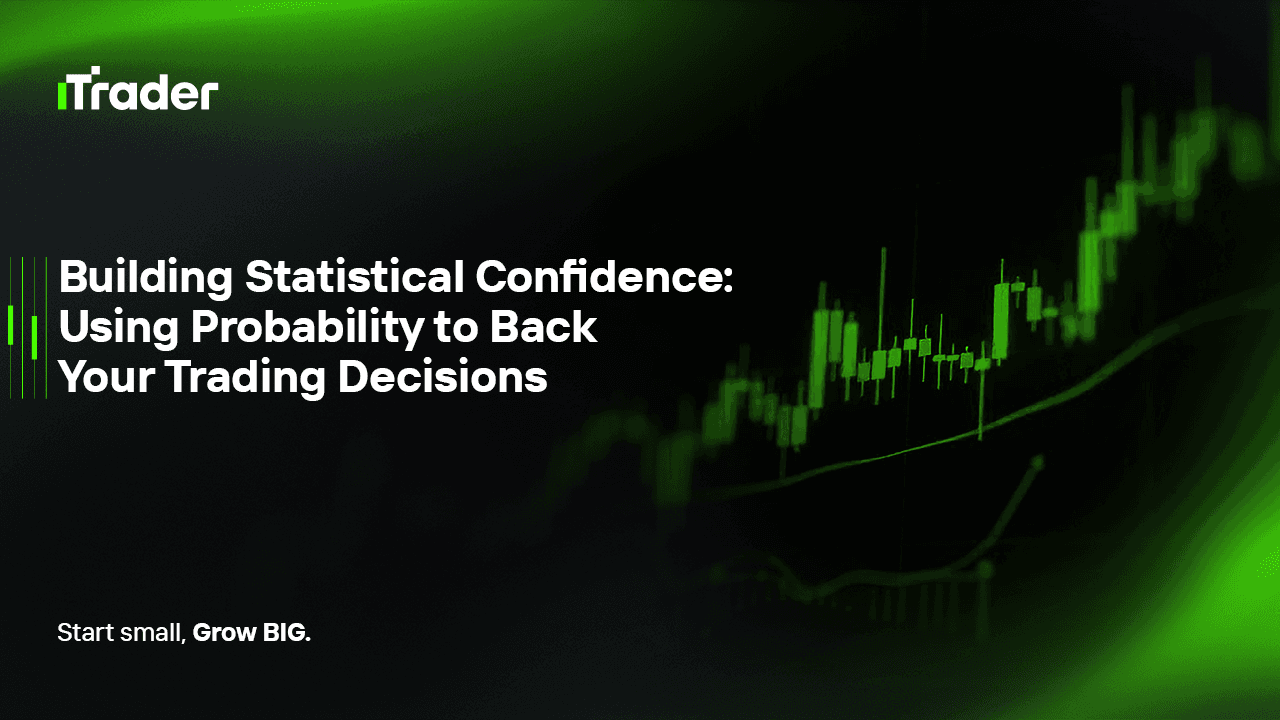2025-10-01
Making decisions in the Forex market often relies on intuition, experience, and market news. However, for consistent long-term success, traders must be able to make decisions with statistical confidence. Relying solely on emotions, temporary signals, or a few successful trades is not enough to pass prop firm evaluations or manage capital effectively.

Statistical methods allow traders to build confidence in their decisions using probability. Rather than trying to predict exactly what will happen in the market, traders can calculate the likelihood of certain outcomes and make systematic, informed decisions.
Probability measures how likely an event is to occur, ranging from impossible to certain. In Forex trading, probability is reflected in strategy win rate, the distribution of outcomes based on risk, and forecasts of strategy performance in various market conditions.
Statistical confidence indicates how reliably results from a sample can be generalized. A strategy may perform well over a period, but that alone does not guarantee future results. Using Confidence Intervals (CI) and hypothesis testing, traders can determine whether outcomes are due to skill or chance.
A Confidence Interval (CI) estimates the range in which the true value of a parameter, such as average strategy return, is likely to lie. It helps distinguish whether good results are systematic or coincidental.
The narrower the CI, the higher the statistical confidence. Narrow intervals indicate a larger sample size or consistent performance. In prop trading, this helps traders decide whether to use a strategy for evaluation, increase capital allocation, or adjust parameters.
Hypothesis testing evaluates whether an assumption is likely true based on probability. In Forex:
The p-value represents the probability of observing results if H₀ is true. A low p-value provides evidence that the strategy’s performance is not random, while a high p-value suggests it may be coincidental.
Each trade is uncertain, but patterns emerge over many trades. Traders can leverage these probabilistic tendencies to gain advantages in prop trading.
For example, if a strategy has a win rate of 55%, risk per trade of 1%, and a reward-to-risk ratio of 1.5:1, the expected return is positive. Applying this strategy over many trades increases statistical confidence, and the Confidence Interval narrows, allowing traders to use the strategy confidently in evaluations and live accounts.
To validate strategy performance, traders should:
Decisions should be made based on statistical confidence rather than intuition.
Prop firms focus on performance stability and risk discipline. By applying statistical methods, traders can:
Statistical validation provides a foundation for assessing a trader’s discipline, consistency, and long-term survivability.
Statistical confidence is not just about calculations; it is about moving from intuition to systematic, probability-based decision-making. Traders who use Confidence Intervals, p-values, and hypothesis testing consistently can maintain adaptability and consistent performance in prop trading and live accounts.
Practical recommendations:
Success in Forex depends not only on finding a winning strategy but also on validating it statistically and executing with confidence. Traders who master these concepts gain the ability to withstand psychological pressure, adapt to changing conditions, and maintain stable performance in prop trading and live accounts.
© 2025 iTrader Global Limited|公司註冊編號:15962
iTrader Global Limited 註冊於科摩羅聯盟昂儒昂自治島穆扎穆杜 Hamchako,並受科摩羅證券委員會授權與監管。我們的牌照編號為 L15962/ITGL。
iTrader Global Limited 以「iTrader」為商業名稱經營,獲得從事外匯交易活動之授權。公司標誌、商標與網站均為 iTrader Global Limited 之專有財產。
iTrader Global Limited 的其他子公司包括:iTrader Global Pty Ltd,澳洲公司註冊編號(ACN):686 857 198。該公司是 Opheleo Holdings Pty Ltd 的授權代表(澳洲金融服務代表編號:001315037),Opheleo 持有澳洲金融服務執照(AFSL 編號:000224485),註冊地址為:Level 1, 256 Rundle St, Adelaide, SA 5000。
免責聲明:本實體並非本網站所交易金融產品之發行者,亦不對其負責。
風險提示: 差價合約(CFD)交易因槓桿效應具高度資本迅速損失風險,未必適合所有使用者。
參與基金、差價合約及其他高槓桿商品交易,需具備專業知識。
研究顯示,84.01% 的槓桿交易者最終蒙受損失。請務必充分了解相關風險,並在投入資金前確保自身已準備好承擔全部損失的可能性。
iTrader 特此聲明,對任何個人或法人因槓桿交易所導致之風險、損失或其他損害,概不承擔全部責任。
使用限制: iTrader 並不向法律、法規或政策禁止此類活動的國家或地區居民提供網站或服務。如您居住於限制使用本網站或服務之司法管轄區,您有責任自行確保遵守當地法律。